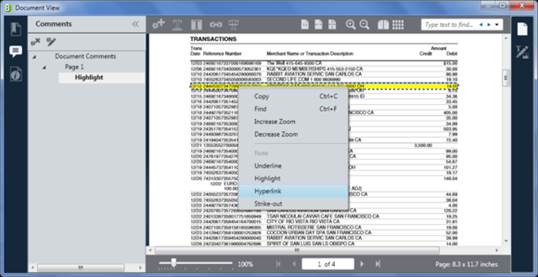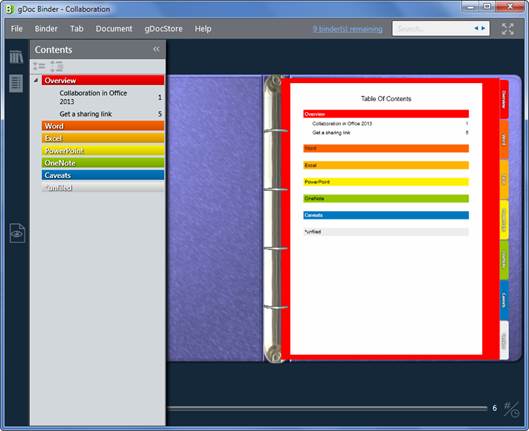A strikingly simple means of
collating notes into virtual folders, but it's bogged down by performance
glitches
For all its strengths, many people find
Microsoft’s OneNote over-complicated: its taxonomy of notebooks, sections and
pages can leave newcomers bewildered. There’s no danger of that with gDoc
Binder, which brings an almost Apple-like level of skeuomorphic design to
note-taking applications.

GDoc
Binder’s library view shows all your binders displayed on shelves, much the way
newspapers and magazines are displayed in the iOS Newsstand.
The software is presented as a virtual ring
binder, in which it’s easy to collate documents from a project, such as a
contract pitch or a house move. Word documents, spreadsheets, PowerPoint
presentations, PDFs and images can be dragged and dropped into the folder, and
then flicked through like sheets of paper. Items can be filed under different
tabs, and reordered, with the software automatically creating a detailed table
of contents that’s updated when documents or tabs are shuffled around.

In
GDoc Binder’s document view you can add comments, bookmarks, hyperlinks and
highlights (shown above) to documents in a binder but they won’t appear on the
originals.
Copies of web pages can also be saved into
binders, simply by entering the URL, from which an offline copy of the page is
stored. Irritatingly, emails can’t be dragged and dropped into gDoc Binder,
although it does include a basic text editor into which the text of emails can
be pasted.
For all its simplicity, gDoc Binder is held
back by a few fundamental flaws. Performance is labored: the animated flicking
was juddery on our test 1.7GHz Core i5 laptop with 4 GB of RAM; importing a
ten-slide presentation dragged the PC to its knees and took more than two
minutes. The orientation of binders is also fixed, meaning landscape images
filed inside a portrait binder are rotated by 90 degrees. The lack of auto save
is disappointing, too.

GDoc
Binder creates a table of contents based on a binder’s tabs, and you can see it
both within the binder and as a slide-out menu in the Binder view.
While the initial price of $10 seems like a
bona fide bargain, it buys you only ten virtual binders; each additional set of
ten costs another $10, which grates slightly given there’s no incremental cost
to the company. What’s more, deleting unwanted folders doesn’t return a binder
to your allocation each new binder created cuts your quota by one.

As
a simple, low-maintenance means of organizing notes and documents, gDoc Binder
has plenty going for it but there are too many kinks to iron out before it can
earn our full recommendation
As a simple, low-maintenance means of
organizing notes and documents, gDoc Binder has plenty going for it but there
are too many kinks to iron out before it can earn our full recommendation.